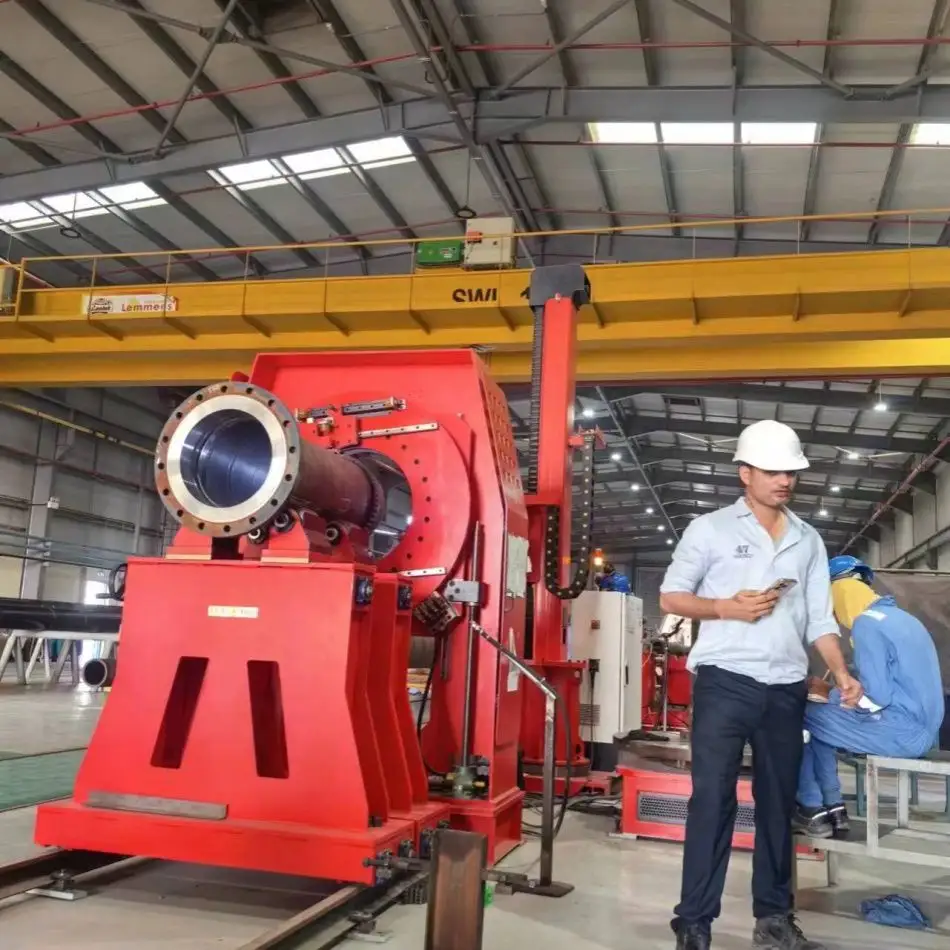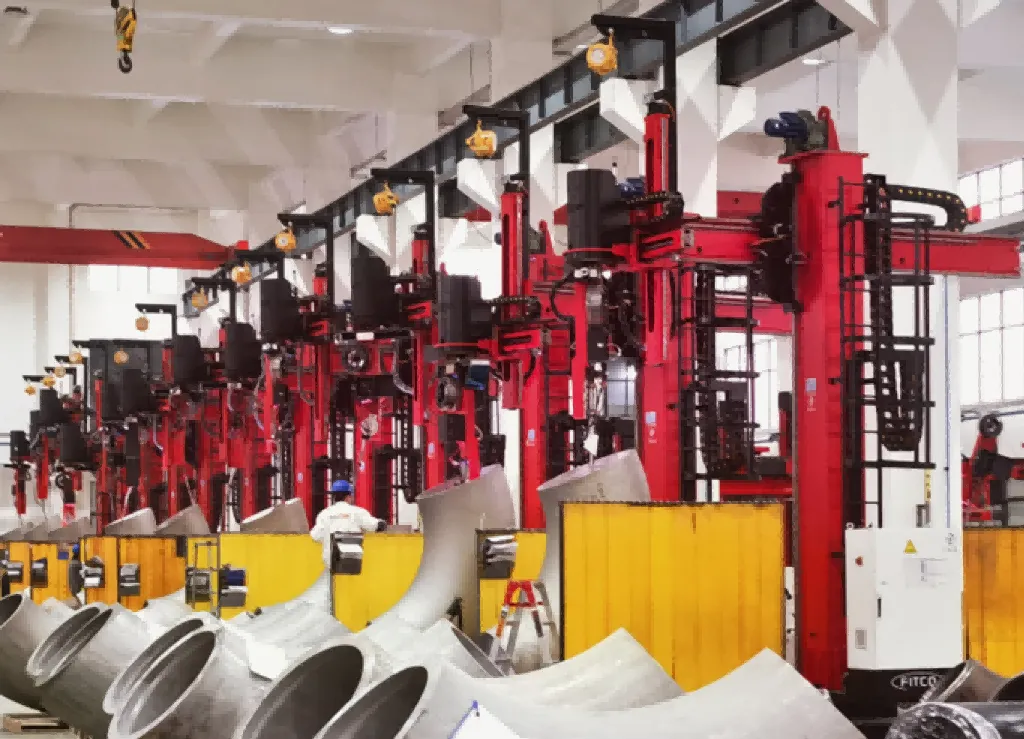Increasing Operational Efficiency Through Advanced Welding Solutions
In today’s demanding industrial environments, maintaining uptime and minimizing maintenance costs are top priorities for facilities seeking to improve productivity. One of the most effective technologies supporting this goal is the pipe cladding station. This specialized welding equipment plays a crucial role in extending the service life of components, optimizing resource use, and enhancing the reliability of production lines. As more industries adopt automation and precision welding, the pipe cladding station emerges as a strategic asset that directly contributes to long-term operational success.
The Role of Automation in Reducing Downtime
Streamlining Welding Processes with Automation
Automated pipe cladding stations significantly streamline the welding process. With precise control over welding speed, heat input, and filler materials, these systems eliminate many manual errors that often cause delays or rework. Automation also reduces human fatigue and variability, which are common sources of downtime in manual welding operations.
Consistent Quality with Fewer Interruptions
Pipe cladding stations deliver consistent, repeatable welds. This repeatability minimizes the chances of defective welds, reducing the likelihood of unscheduled repairs and line stoppages. By integrating programmable settings, the equipment ensures each weld meets strict quality standards without additional intervention.
Maintenance Savings Through Durability and Reliability
Built for Heavy-Duty Use
Pipe cladding stations are engineered for durability. Constructed with robust materials and designed to handle high-temperature operations, these systems are built to withstand harsh industrial conditions. Their rugged construction means fewer breakdowns and less frequent maintenance.
Preventive Maintenance Features
Modern pipe cladding stations often include predictive maintenance tools that alert operators to potential issues before they escalate. From monitoring wear on torch heads to tracking consumable usage, these smart features contribute to lower maintenance costs and prolonged machine life.

Real-Time Monitoring and Diagnostic Capabilities
Enhanced Control Through Data Feedback
Real-time monitoring systems offer continuous feedback on welding parameters. Operators can track temperature fluctuations, arc stability, and wire feed speeds. If parameters drift outside the optimal range, automatic adjustments are made, preventing damage to both the weld and the equipment.
Immediate Troubleshooting Support
Advanced diagnostics reduce maintenance-related delays. When a problem arises, the pipe cladding station can pinpoint the issue and provide actionable feedback. This capability allows for faster response times and eliminates the guesswork in identifying and fixing faults.
Reducing Rework and Material Waste
Higher Accuracy in Weld Deposition
A major cause of production delays is rework due to inaccurate or inconsistent welds. Pipe cladding stations ensure optimal weld deposition by using CNC controls and precise torch positioning. This accuracy minimizes material waste and eliminates time spent correcting errors.
Fewer Consumables and Efficient Use of Resources
These stations are optimized to use minimal filler material while still achieving full cladding coverage. The result is a reduction in consumable costs and improved efficiency. Less rework also means less energy and labor are required to finish a job.
Customizable Configurations to Match Production Needs
Flexible Integration Options
Pipe cladding stations can be tailored to match specific production environments. Whether you’re working with stainless steel, Inconel, or other alloys, the equipment can be configured to handle various material types and pipe diameters. This flexibility ensures that the station fits seamlessly into your facility’s existing setup.
Modular Designs for Scalability
Scalable design is another advantage. Facilities with changing production needs can add or remove components such as welding heads, manipulators, or wire feeders without investing in a completely new system. This adaptability reduces the long-term cost of ownership and prevents equipment redundancy.
Enhanced Operator Safety and Training Efficiency
Safer Working Conditions
Manual welding involves exposure to high heat, harmful fumes, and UV radiation. Pipe cladding stations enclose many of these risks, using shielding and automation to protect the operator. Less physical involvement means a lower risk of workplace injuries.
Reduced Training Time for New Operators
Thanks to automation and programmable systems, new operators require less time to become proficient with a pipe cladding station. Pre-set programs guide the process, while user-friendly interfaces help trainees understand and control the machine efficiently. This leads to fewer operational errors and shorter learning curves.
Long-Term Cost Efficiency
Lower Total Cost of Ownership
While the upfront investment in a pipe cladding station may be substantial, the long-term savings quickly offset the initial cost. Reduced downtime, lower maintenance, and less material waste collectively contribute to a lower total cost of ownership. Facilities benefit from faster project turnaround times and higher overall throughput.
Better ROI Through Prolonged Equipment Life
The robust design and smart maintenance features help extend the lifespan of the station. With fewer interruptions and minimal repairs, your investment remains productive for years. In turn, this boosts your return on investment and adds to your competitive edge in the market.
Improved Compliance and Quality Assurance
Meeting International Welding Standards
Pipe cladding stations are often designed to comply with international standards such as ASME, AWS, and ISO. By meeting these regulatory requirements, facilities can ensure their welds are qualified for global markets and applications across industries.
Supporting Documentation and Traceability
Many stations provide built-in documentation tools that record welding parameters and results. This traceability is crucial for audits, quality assurance, and warranty compliance. It also allows for easy retrieval of data in case issues arise post-production.
Future-Proofing Production with Technological Advancements
Integration with Digital Platforms
Some pipe cladding stations can integrate with digital factory systems, supporting data exchange with MES or ERP platforms. This compatibility ensures smooth information flow and helps streamline supply chain management, scheduling, and reporting.
Adaptable to New Welding Techniques
As new welding techniques and materials emerge, a high-quality pipe cladding station can be upgraded with new software or hardware. This upgradeability ensures that your equipment doesn’t become obsolete and continues to meet evolving industry demands.
FAQ
What types of pipes are compatible with a pipe cladding station?
Pipe cladding stations can accommodate a wide range of pipe materials and diameters, including carbon steel, stainless steel, and exotic alloys such as Inconel. The station's modular design allows for customization based on specific project needs.
How often does a pipe cladding station require maintenance?
Maintenance frequency depends on usage intensity and environment. However, modern systems with predictive diagnostics typically require only routine checks and scheduled servicing, significantly reducing unscheduled downtime.
Can operators without welding experience use a pipe cladding station?
Yes. Many pipe cladding stations are equipped with intuitive user interfaces and pre-set programs that allow less-experienced operators to perform tasks accurately and safely with minimal training.
Is investing in a pipe cladding station cost-effective for small to mid-sized facilities?
Absolutely. While the initial cost may seem high, the long-term benefits such as reduced downtime, lower labor costs, and minimized material waste make it a worthwhile investment even for smaller operations.
Table of Contents
- Increasing Operational Efficiency Through Advanced Welding Solutions
- The Role of Automation in Reducing Downtime
- Maintenance Savings Through Durability and Reliability
- Real-Time Monitoring and Diagnostic Capabilities
- Reducing Rework and Material Waste
- Customizable Configurations to Match Production Needs
- Enhanced Operator Safety and Training Efficiency
- Long-Term Cost Efficiency
- Improved Compliance and Quality Assurance
- Future-Proofing Production with Technological Advancements
- FAQ

 EN
EN
 AR
AR BG
BG HR
HR CS
CS DA
DA NL
NL FI
FI FR
FR DE
DE EL
EL HI
HI IT
IT JA
JA KO
KO NO
NO PL
PL PT
PT RO
RO RU
RU ES
ES SV
SV TL
TL IW
IW ID
ID LT
LT UK
UK SQ
SQ HU
HU TH
TH TR
TR FA
FA AF
AF CY
CY MK
MK LA
LA MN
MN KK
KK UZ
UZ KY
KY